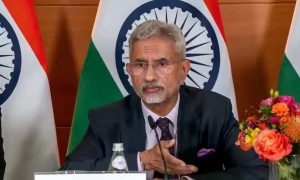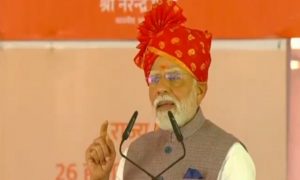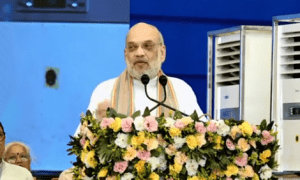By Deepika , July 21 (IND Samachar) : Temple is an abode where Bhagwan resides. It is a house/seat of Bhagwan and a teertha (pilgrimage) for devotees. These temples are built on certain systems as each temple is a house of different Bhagwan. Strict sanctity is maintained to ensure the purity of place and surroundings. So much is the devotion towards sanctity that even the cook who makes Prasad follow certain rituals in their lifestyles and eating practices. Temples also bring people together for many causes in the form of devotion. Eg:- When Yajnas are performed, many people sit together and chant mantras (the purpose of chanting mantras together by multitudinous is to create certain vibes). Temples bring people from every caste, creed, and color together to celebrate the devotion. Outside of temples, one can be a Brahmin, a Vaishnava, a Kshatriya or a Shudra, the moment you enter a temple you are a Bhakta (a devotee). With this, it brings people (Hindus) together. They were a Triveni of Religion, culture and Scientific research. With Gurukuls and Gaushalas it’s an institution in itself and definitely a hurdle for those, who were looking to religiously convert Hindus.
For many years India is under attack from religious invaders through the sword. When India became a British colony, Brit also brought church with them. Evangelism is one of the aggressive practices of the church to convert people. Evangelism is defined as a commitment or act of publicly preaching the gospel with the intention of spreading the Bible or teaching of Jesus. With a country like India and multiple Hindu scriptures, it became nearly impossible for the church to convert. It is said that many tactics were used to manipulate Hindu scriptures, divide societies and made Hindus inferior and the later convert. With the internet and Social media, lies are being exposed. People are becoming more aware of such practices. It is alleged that the previous government in the center also helped these evangelicals by bringing laws which are seen as anti-Hindu, thus helping in conversions. It is also seen that most of the conversions are based on anti-Hindu sentiments. Lately, we have seen a dreadful step of building a Christian cemetery alongside Manimoortheeswaram Ganpati Temple located in Thirunelveli – glorious land of Tamil Nadu. Predominantly ruled by the Pandyas, this place is rich in architectural temples with ancient traditions. Thirunelveli has mix population of Hindus, Jains, Muslims, and Christians where people still practice Hindu cultural heritage and Sanatan traditions. This cemetery is built within the complex of the temple. It is alleged that in 1985 Christian missionaries illegally captured Temple land. A local of the village fought the case but case reached nowhere after his demise.
The question remains, why a cemetery near a Hindu temple? Temples are very different from the church. Many churches have Ossuaries (especially in Europe), where dead people are decorated and their bones/skulls are used in the church for decorations and other causes. Some skeletons are imported and some are taken out of graves from nearby cemeteries. This link provides information on Church ossuaries. https://www.atlasobscura.com/lists/definitive-guide-to-ossuaries-crypts-and-catacombs
However, temples are different. Especially this particular temple, as this is the only tantric temple of Ganesha of its kind, and the biggest Uchishta Ganapati temple in whole Asia. Temples are very sacred in nature and in no form they can be polluted. A cemetery or any type of dead body in the complex of the temple is nothing but pollution. It violates the very concept of a Temple (unless it’s made for a specific energy where cremation can be performed). Even if the land is occupied by the church, how can authorities allow a cemetery to be built on the same pious land? Moreover, how can church bury dead within the temple complex? Is this a deliberate attempt to create doubt among people? After infiltrating many Hindu temples by Christian administrators and compromise ancient rituals/traditions, is this a new tactic to violate the temple atmosphere, stop Hindus from visiting temples and eventually take over the land? Hindus do not go to a cemetery or funeral ground without any reason. It is a place for dead. In Hindu tradition, certain sanctity is maintained for dead as well, which is totally different from temples. If a cemetery is built near or on the same complex of a temple, people will hesitate to go to the temple as the cemetery is considered inauspicious. Church in India very well understands this.
Can we conclude that after attacking Hindu scriptures, Hindu temples are under attack? And this time the invader is using disgraceful strategy to demolish Sanatan pratha? By occupying temple land and building a cemetery who will benefit? What is the purpose of taking over temple land when the church is the biggest landowner in India?
Deepika (the author, can be fallowed on her Twitter @d__dips)




























 WhatsApp us
WhatsApp us